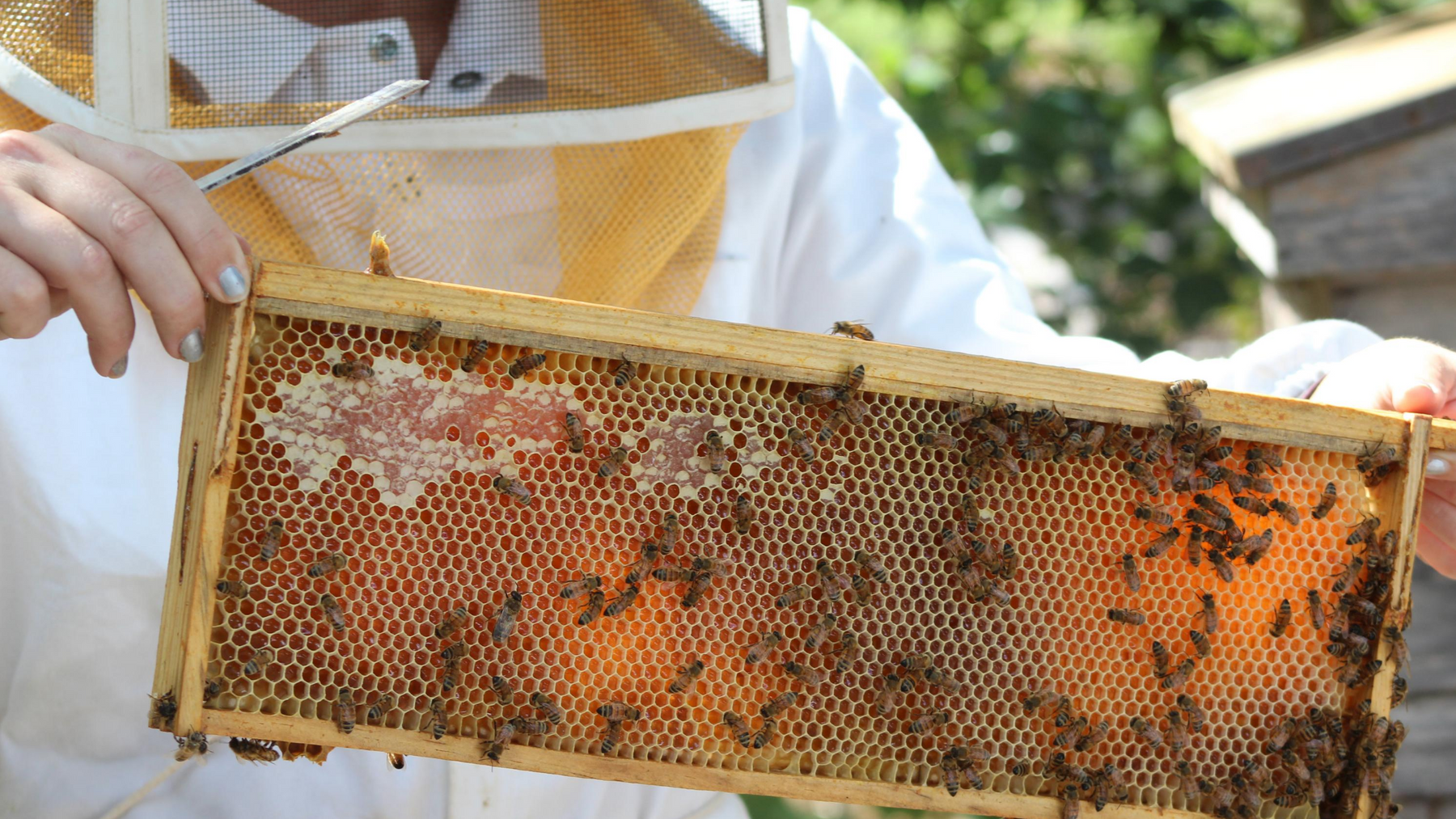
The Beekeeper’s Guide to Frame Repair and Replacement
In our last two posts, The Beekeeper’s Guide to Wax Moths, Part 1 and Part 2, we learned that wax moths hide and lay eggs in the cracks and crevices inside your hives and that wax moth larvae tunnel into the wood and can affect the integrity of your hive components, especially the hive frames. Knowing this, today, we’re going to talk about frame repair and/or replacement.
As a new beekeeper, your new hive is a sight to behold. Its components are clean, tight and ready to make all your beekeeping dreams come true. After a while, however, the hive begins to lose that "new car" smell. The frames begin to experience some wear and tear. They may have been damaged by wax moths or an opportunistic field mouse. They don’t fit as tightly as they once did and now have cracks and crevices.
Repair or Replace?
As you look at your hive components and assess their potential for repair or need for replacement, sometimes you have to also determine if you have the time to dedicate to the needed repair. You have to or ask yourself if it wouldn't be better to just go ahead and replace the frames. Frame repair can be time-consuming and tedious. Weigh your options before making your decision.
Build New Frames
If you have money and time, you can purchase unassembled frame parts and build them yourself. This will give you completed frames, plus you’ll have frame parts (top, bottom and end bars) available to make any necessary repair and replacements at any time. Assembling frames is a great winter activity – you can sit and watch TV or listen to music while you work on them. Although there is some cost, the cost is reduced compared to already-built frames.
Purchase Already-Built Frames
If you have money but are short on time, purchasing ready-to-go assembled frames may be your best option. The assembled frames can often be purchased with waxed foundation, as well.
Make the Repairs
When you’re short on money and have the time, or if you enjoy the challenge of fixing things, make the repairs yourself.
Disease Issues
If you are dealing with disease issues in your hive, many times it’s best to replace the frames with new components. Ensure that the old disease frames are disposed of properly. Many states require that beekeepers burn diseased hive components.
Tips for Frame Repairs
Consider the following as you make repairs to the frames.
Can the Damage be Fixed?
If you hive has been damaged by a mouse or wax moths, analyze the extent of the damage. Many times the damage is superficial and the frame can be re-used, if, in the case of wax moths, the frames have been cleaned up and frozen to kill and eliminate all stages of moths.
Most Common Types of Damage
The most common parts of the frame that are damaged are the end of a top bar or a snapped bottom bar. Depending on the style of the frame, top bars and end bars require more work, especially if they are wired for a foundation. When a bottom bar needs replacement, the old bar is removed and a new one is nailed in place.
Repairing Small Holes and Cracks
You may be tempted to repair small holes and cracks with wood putty, but wood putty products may not be safe for the bees. Instead, brush a generous amount of Titebond II glue over the crack/crevice/defect, then press sawdust into the crack/crevice/defect, filling the crack/crevice/defect sufficiently. Allow to dry completely. You may sand the surface smooth if desired.
In Conclusion ...
There is no right or wrong choice when it comes to the decision of repairing or replacing. If you decide not to repair, then deconstruct the frame and save what you can to use for spare parts later. Fix the frames that you decide are worth your time and effort and purchase those that are not. And remember ... enjoy your beekeeping journey!
General Questions About Frame Repair & Replacement
What Specific Signs Should a Beekeeper Look for to Identify Wax Moth Damage Versus Other Types of Damage Like That Caused by Mice?
Wax moth damage is characterized by webbing and tunnels filled with debris inside the frame, remnants of larvae activities. Mouse damage includes gnawed wood, larger holes, and possibly droppings or nesting materials inside the hive.
How Often Should Beekeepers Perform Inspections Specifically to Check the Integrity of Their Hive Frames?
Beekeepers should check hive frames during routine inspections, which can be weekly to bi-weekly during the active season. In winter, less frequent checks are needed. Regular inspections help detect issues like pest infestations or wear and tear early.
Can the Blog Provide a Step-by-Step Guide or Tutorial on How to Properly Assemble Frames from Unassembled Parts?
To assemble frames, lay out all parts: top bars, bottom bars, and side bars. Fit side bars into the notches of the top bar, slide the bottom bar into place, and secure each joint with small nails or a staple gun. Ensure everything is square and tightly fitted. For frames with foundation, attach the foundation securely as an additional step.




Leave a comment